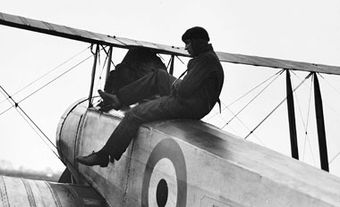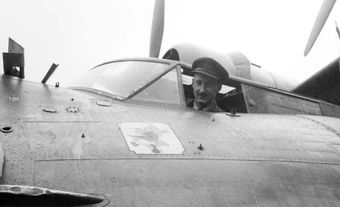George Downie
Captain George Downie, naval officer, military figure in the WAR OF 1812 (b at New Ross, Ireland; d near Plattsburgh, NY, 11 Sept 1814). George Downie joined the Royal Navy in the 1790s and was promoted to lieutenant in 1802. In 1808, he was given command of a sloop on station in the English Channel and earned some fame after capturing several French privateers.
Downie's Service in Upper Canada
Downie became a post captain in 1814 and was sent to UPPER CANADA. Upon arriving at KINGSTON in June, Downie was given command of HMS Montreal and in August, was abruptly sent to replace Captain Peter Fisher as commander of the naval station at Île-aux-Noix on the Rivière Richelieu. Downie arrived there on 1 September and officially took command two days later.
Downie's squadron was to play an important role in the British expedition against Plattsburgh, New York (seeBATTLE OF PLATTSBURGH). The offensive was a pre-emptive strike against American land and naval forces to eliminate any threat to LOWER CANADA. Unfortunately, Downie arrived at his new post after the army division and the expedition commander-in-chief Lieutenant General Sir George PREVOST had crossed the frontier, and the two men were unable to discuss plans. Downie's new flagship the Confiance was not finished, and he decided to remain at Île-aux-Noix to oversee its completion. He sent his other vessels and several gunboats to Chazy on LAKE CHAMPLAIN to rendezvous with the division.
Downie's Preparations
Completing Confiance proved difficult. With 37 guns, it would be the most powerful naval vessel on the lake. However, the magazine was not built, portions of the superstructure were missing, and the guns lacked locks, the mechanisms used to fire them. The crew was also under strength. Downie's appeals for help to Commodore Sir James Lucas YEO, commander-in-chief of the inland naval forces, were met by refusals. An appeal to the senior naval officer at Montréal for locks was also dismissed. The crew was hastily assembled but had little opportunity to train together. When Confiance finally left Île-aux-Noix on 8 September, the magazine was still incomplete and the powder was towed on a boat pulled from astern. Without locks, the guns could only be fired using matches.
Engagement at Plattsburgh
On 6 September, the left division arrived at Plattsburgh and lay siege to the town. Prevost requested Downie to engage the four American vessels and their gunboats in Plattsburgh Bay before the division attacked. Communication between Downie and Prevost was by letter and neither commander appeared to grasp the other's intent. Downie promised to commence his attack on the 10th, but contrary winds postponed it. The correspondence between the two men became terse and in their final exchange, Downie refused to send Prevost a written reply and instructed Prevost's aide to report that he would attack the following morning. Downie then conducted a reconnaissance of the American fleet and issued instructions to his captains for the coming battle.
Downie led his fleet into Plattsburgh Bay during the morning of 11 September 1814. Contrary winds made it difficult to steer northwards towards the American flotilla. The result was that when the battle opened, the British were at a disadvantage. Confiance faced heavy fire and the brig Chub was heavily damaged, and surrendered. Downie was mortally wounded early in the action. Whereas the British gunboats contributed little to the action, the combined fire from six American galleys and four gunboats bought the Americans a victory. Both squadrons were heavily damaged, but with Downie dead and many casualties among Confiance's crew, two vessels out of action and the gunboats gone, the surviving British vessels soon hauled down their colours.
Aftermath of the Battle of Plattsburgh
Just before the naval engagement opened, the ground troops moved to their start positions and readied for their attack. Concerned that the victorious Americans could now cut his line of communication to Canada, Prevost called off the land attack two hours after the naval battle ended. The next day he ordered the division back into Lower Canada and left a strong detachment to guard the border. Commodore Yeo blamed Prevost for having goaded Downie into battle and then for failing, as he had supposedly promised, to commence the land attack once the naval battle began. The evidence indicates that Downie decided to attack on his own, while Prevost considered the two attacks as being mutually exclusive. Yeo never acknowledged his responsibility for the state of the manpower and materiel in the Lake Champlain squadron.
Downie was buried in a cemetery in Plattsburgh and at the behest of his sister-in-law, Mary, a monument was raised over his grave in September 1843.

 Share on Facebook
Share on Facebook Share on X
Share on X Share by Email
Share by Email Share on Google Classroom
Share on Google Classroom


